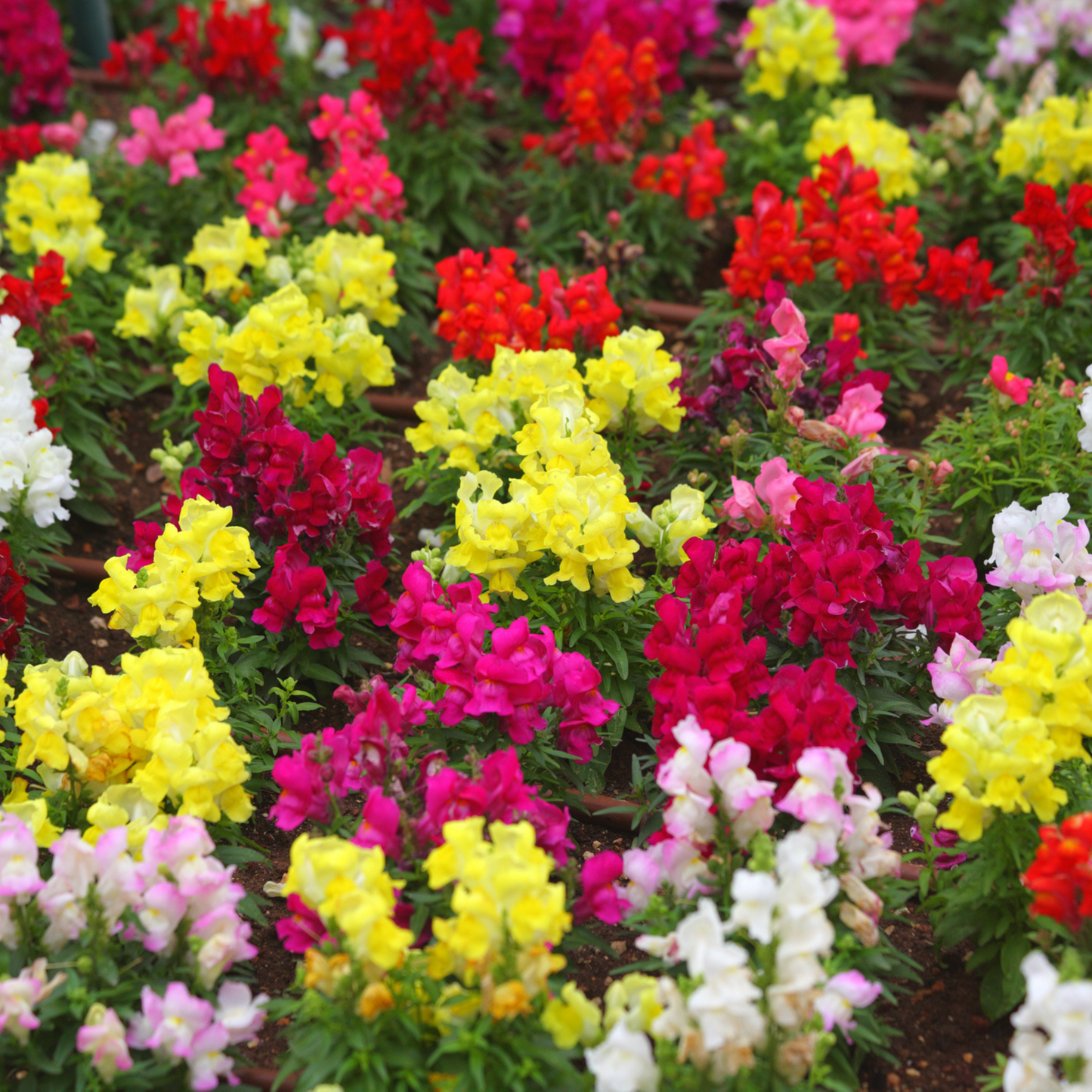JONQUIL
Antirrhinum Snapshot Mixture - Leeubekkies - 10 seeds
Antirrhinum Snapshot Mixture - Leeubekkies - 10 seeds
Couldn't load pickup availability
Growing Antirrhinum majus, commonly known as Snapdragons, can be a rewarding experience. These colorful and versatile flowers are well-loved for their dragon-shaped blooms, which open when gently squeezed. They are perfect for adding vertical interest to gardens, containers, or as cut flowers. Here's how to successfully grow and care for them: Autumn Flowers.
Choosing the Right Location
Sunlight: Snapdragons thrive best in full sun (at least 6 hours of direct sunlight daily). They can tolerate partial shade, but flowering may be reduced.
Soil: Plant them in well-draining soil with a pH between 6.2 and 7.0. They prefer loamy soil enriched with organic matter for better growth.
Planting Snapdragons
Timing: For early blooms, start seeds indoors 6-8 weeks before the last frost. Transplant seedlings outdoors when temperatures are consistently above 10°C. Alternatively, you can directly sow seeds outdoors after the last frost.
Spacing: Space plants 25 cm apart depending on the variety. This allows for good air circulation, reducing the risk of fungal diseases.
Caring for Snapdragons
Watering: Keep the soil evenly moist, especially during dry spells. However, avoid waterlogging as it can cause root rot. Once established, they are somewhat drought-tolerant.
Fertilizing: Apply a balanced fertilizer every 4-6 weeks during the growing season to encourage continuous blooms.
Deadheading: Remove spent flowers to promote new blooms and prolong the flowering period. This will also prevent the plant from going to seed too early.
Dealing with Pests and Diseases
Pests: Snapdragons can be affected by aphids, spider mites, and caterpillars. Use insecticidal soap or neem oil if infestations occur.
Diseases: Be mindful of fungal issues like powdery mildew and rust. Ensure proper spacing, good air circulation, and avoid overhead watering to prevent these problems.
Pruning and Overwintering
Pruning: Trim plants back by about a third after the first flush of flowers to encourage a second bloom in late summer or fall.
Overwintering: In milder climates, snapdragons may survive winter. Mulch around the base to protect them from frost. In colder regions, treat them as annuals or bring potted plants indoors.
Propagation
Seeds: Collect seeds from dried flower heads if you want to grow them next year. Alternatively, let some flowers go to seed for self-seeding in the garden.
Cuttings: You can also propagate snapdragons by taking softwood cuttings in early summer.
Varieties to Consider
Snapdragons come in a wide range of sizes and colors:
Dwarf varieties are perfect for borders and containers.
Intermediate varieties are great for garden beds.
Tall varieties are ideal for cutting gardens.
Tips for Growing Snapdragons in Containers
Use a potting mix with good drainage.
Water regularly, as containers dry out faster than garden soil.
Choose compact or dwarf varieties to prevent toppling over.
With proper care, snapdragons will reward you with vibrant blooms from spring through Autumn!
Share


